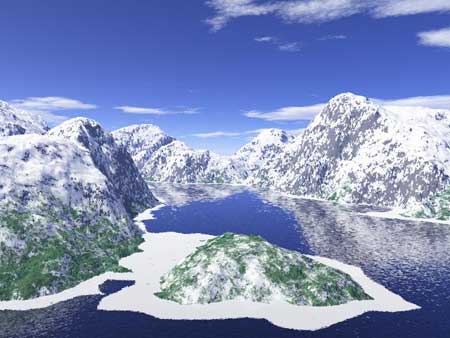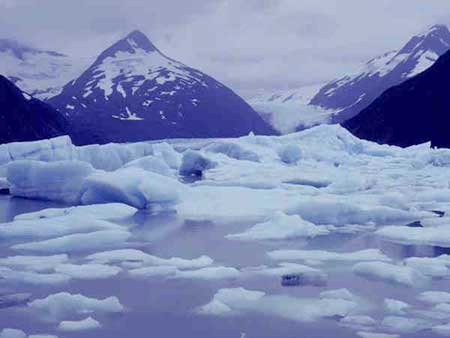Why Does Ice Float on Water Instead of Sinking? This article will provide you with the answer.
Ice forms on the surface of rivers and lakes during winter; it has never been observed that ice forms at the bottom of the water.
Have you ever wondered why ice floats instead of sinking? The answer lies in the density of water. Ice is the solid form of water. Ice floats because it has a lower density than liquid water. In contrast, most other substances have a higher density in their solid state.

Ice floats because it has a lower density than liquid water. (Image: web.utk).
Since ice is formed from water, how can it be lighter than water?
Water has a rather unique property. At temperatures above 4 degrees Celsius, it behaves like most other substances, expanding when heated and contracting when cooled; however, when water is below 4 degrees Celsius, its properties reverse, meaning it expands when cold and contracts when warm. For the same amount of water, when it freezes, its volume expands. According to Newton’s Second Law, mass is inversely proportional to volume, which is why ice becomes lighter. Therefore, ice always forms on the surface of water, never freezing at the bottom. It is only when the conditions are extremely cold and temperatures drop significantly that water in rivers and ponds freezes from the top down.

Water is a unique substance. (Image: goingnorthrv)
Claire Parkinson, a former climate scientist at NASA, states that water is a unique substance. The ice cubes that float in a glass of water are due to their molecular structure.
A water molecule (H2O) consists of two hydrogen atoms and one oxygen atom. These atoms share pairs of subatomic particles that create covalent bonds. The positive charge of the hydrogen atom is attracted to the negative charge of the oxygen atom in another water molecule, forming what are known as hydrogen bonds.
When water freezes, these hydrogen bonds create a crystal lattice. Most of the ice on Earth forms repeating hexagonal crystals. There are many gaps within this lattice structure filled with air, which causes the density of ice to be lower than that of water.
This explains why icebergs float on the ocean, even though they can be about 30 to 50 meters high. This floating ice is beneficial, as life can still thrive beneath the frozen surfaces of seas and lakes. If these icebergs were to sink, aquatic life would be negatively affected.


















































